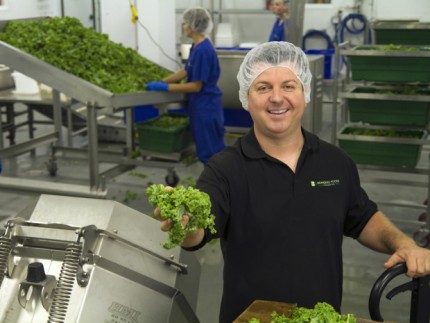Northumberland Farmer Models Shift from Tobacco to Kale with Booming Business
Posted: July 22, 2015
Categories: Food in the News / Food Processing / GoodFoodBites
In Ontario’s Northumberland County, farmers have begun to transition their fields to accommodate new consumer demand for products such as hops, lavender, ginseng and kale, filling the void left by diminishing tobacco crop demands.
An article in the Financial Post highlights the story of Draupadi and Adrian Quinn, farmers and entrepreneurs in Northumberland County, who converted 10 acres of former tobacco fields into kale production in 2009. Since then, their farm Kayley’s Acres has been focused on growing organic kale and producing kale chips onsite. It is currently the largest organic kale farm in Ontario. Their successful model has earned a Premier’s Award for Agri-Food Excellence, and enabled the release of a second line of kale chips for the mainstream market.
“We’ve gone from a small organic farm to on-farm processing to a mid-sized Ontario-based processor that has the opportunity to expand rapidly and create value for the community and province,” Quinn told the Financial Post.
The switch from tobacco crops to nutrient-rich crops such as kale, and hops to feed a booming craft beer industry, demonstrates huge potential for Ontario tobacco growers looking to transition or diversify on their fields. The story of Kayley’s Acres is one of a successful entrepreneur, listening to and acting on consumers’ increased demand, in this case for convenient healthy snack options. Their farm and facility have also made an impact on the region’s vegetable processing capacity: their vertically-integrated company has purchased the largest kale dryer in the world, and has created 19 skilled jobs in the region, a number expected to triple in the next 18 months.
Read the full article.

